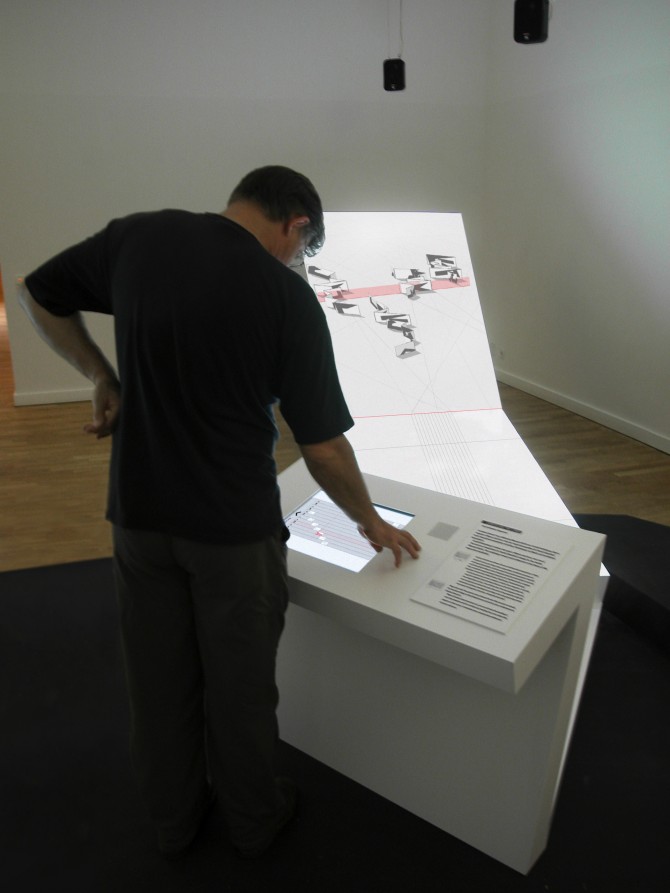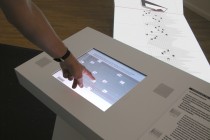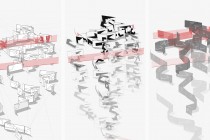Composing the Lines, 2003
Jewish Museum Berlin, Germany
Working on his design for the Jewish Museum in Berlin, Daniel Libeskind referred to the project as “Between the Lines”, a title that picked up on central aspects of his vision for the building. The lines connecting the centres of Jewish life in Berlin were a key springboard in this process, an invisible, irrational geographical matrix from which he developed a visual alphabet of architectural forms.
The two installations Behind the Lines and Composing the Lines developed for the Daniel Libeskind retrospective at the Jewish Museum in Berlin illustrate key aspects of the architecture in different ways. While Behind the Lines is purely designed to convey information, Composing the Lines offers an artistic exploration of Libeskind’s architecture. The installation is multi layered and difficult to decipher. It explores the intimate relationship between the museum’s architecture and the music of Arnold Schönberg.
As Libeskind himself claimed, the Jewish Museum completes Schönberg’s unfinished opera Moses und Aaron. The central theme of this opera is the attempt to present the unpresentable, a predicament which Libeskind also faced in tracing the city’s eliminated Jewish culture and the horrors of the holocaust. The visual alphabet he developed from these questions and the laws governing Schönberg’s twelve-tone technique form the basis of the interactive audio-visual architectural generator Composing the Lines.
The installation consists of a touchscreen and two separate projection surfaces. By interacting with the touchscreen, users intuitively compose a row of twelve tones, each allocated to one of the seven visual alphabets in the museum architecture. This row of twelve notes — the prime series — is reversed, inverted and retrograde-inverted according to the principles of twelve-tone music. Projected onto the second screen, these two-dimensional elements are arranged in a three-dimensional row and played so that the composition can be experienced as a musical and architectural structure.
Composing the Lines deliberately avoids a simple reading. Although the interaction is intuitive, the installation remains a primarily aesthetic and associative experience. A complete deciphering of its workings is deliberately avoided with the aim of encouraging intensive contemplation and personal interpretation.










